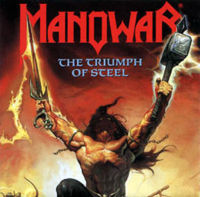ΑΝΤΙ ΕΠΙΛΟΓΟΥ: ΟΤΑΝ ΤΟ HOLLYWOOD ΠΗΓΕ ΣΤΗΝ ΤΡΟΙΑ...
Σωστό Λάθος
Σωστό Λάθος
Σωστό Λάθος
Σωστό Λάθος
Σωστό Λάθος
Σωστό Λάθος
Σωστό Λάθος
Σωστό Λάθος
Σωστό Λάθος
Σωστό Λάθος
Σωστό Λάθος
Σωστό Λάθος
Σωστό Λάθος
Σωστό Λάθος
Σωστό Λάθος
Σωστό Λάθος
Σωστό Λάθος
Σωστό Λάθος
Σωστό Λάθος
Σωστό Λάθος
Η ταινία Τροία προκάλεσε μεγάλη συζήτηση γύρω από την ελευθερία του δημιουργού-σκηνοθέτη, σε σχέση με το αρχαίο κείμενο από το οποίο εμπνεύστηκε. Ο ίδιος ο σκηνοθέτης, όπως είπαμε παραπάνω, δήλωσε ότι η ταινία του δεν αποτελεί κινηματογραφική απόδοση του ομηρικού έπους, το οποίο αποτελέσε απλώς την πηγή έμπνευσης (μαζί με την Αινειάδα). Λαμβάνοντας υπόψη ότι η Ιλιάδα δεν αποτελεί ιστορική πηγή αλλά λογοτεχνία (δηλαδή αποτέλεσμα δημιουργικής έμπνευσης) μπορείτε στην τάξη να χωριστείτε σε δύο ομάδες και να διεξαγάγετε έναν αγώνα λόγων: η πρώτη ομάδα θα υπερασπίζεται τις επιλογές του σκηνοθέτη, η δεύτερη θα επικρίνει τον τρόπο με τον οποίο "χρησιμοποίησε" την Ιλιάδα.
Επιχειρήματα μπορείτε να αντλήσετε από κινηματογραφικές κριτικές δημοσιευμένες σε εφημερίδες αλλά και από την έρευνα που πραγματοποίησαν οι συμμαθητές/τρίες σας με θέμα Η Αρχαία Ελληνική Ιστορία μέσα από την κάμερα του Hollywood.
Στην ενότητα "Ut poesis, pictura: Ο τρωικός πόλεμος στην τέχνη" είχες την ευκαιρία να δεις και να αναζητήσεις έργα που μαρτυρούν την ομηρική επίδραση στις καλές τέχνες, από τη μυκηναϊκή εποχή μέχρι τις μέρες μας. Τι συμβαίνει όμως με την 7η τέχνη, τον κινηματογράφο; Η ταινία του Πίτερσεν δεν είναι η πρώτη κινηματογραφική απόδοση του ομηρικού έπους! Αναζήτησε και άλλες ταινίες που μαρτυρούν την παρουσία του Ομήρου στον κινηματογράφο.
Μια ανάλογη έκθεση είχε οργανωθεί πρόσφατα στη Βασιλεία, με θέμα «Όμηρος: Από το μύθο της Τροίας στην ποίηση και στην τέχνη».
Όσο για τη μουσική, ένα δείγμα της ομηρικής παρουσίας ακολουθεί παρακάτω...
Και λίγη ροκ-μέταλ Ιλιάδα...
The Triumph of Steel
From Wikipedia, the free encyclopedia
| The Triumph of Steel | |||||
|---|---|---|---|---|---|
 |
|||||
| Studio album by Manowar | |||||
| Released | 1992 | ||||
| Genre | Power Metal | ||||
| Length | 69:26 | ||||
| Label | Atlantic | ||||
| Professional reviews | |||||
| Manowar chronology | |||||
|
|||||
The Triumph of Steel was released in 1992 by Manowar. It is the only Manowar album to feature David Shankle and Rhino. Cover art by Ken Kelly.
Contents |
Track listing
- "Achilles, Agony and Ecstasy in Eight Parts" – 28:38
- Prelude
- I. Hector Storms the Wall
- II. The Death of Patroclus
- III. Funeral March
- IV. Armor of the Gods
- V. Hector's Final Hour
- VI. Death Hector's Reward
- VII. The Desecration of Hector's Body
- Part 1
- Part 2
- VIII. The Glory of Achilles
- "Metal Warriors" – 3:54
- "Ride the Dragon" – 4:33
- "Spirit Horse of the Cherokee" – 6:02
- "Burning" – 5:10
- "The Power of Thy Sword" – 7:51
- "The Demon's Whip" – 7:50
- "Master of the Wind" – 5:26
Achilles, Agony and Ecstasy in Eight Parts
AAaE is the longest (28'38") and most complex Manowar song: probably an anticipation of a concept album that was never accomplished. Because of its Homeric content, AAaE has recently attracted the attention of a group of scholars at Bologna University (Italy). Mrs E. Cavallini, Professor in Classics, has written about this song: "Joey DeMaio’s lyrics imply a careful and scrupulous reading of the Iliad. The songwriter has focused his attention essentially on the crucial fight between Hector and Achilles, has paraphrased some passages of the poem adapting them to the melodic structure with a certain fluency and partly reinterpreting them, but never altering or upsetting Homer’s storyline. The purpose of the lyrics (and of the music as well) is to evoke some characteristic Homeric sceneries: the raging storm of the battle, the barbaric, ferocious exultance of the winner, the grief and anguish of the warrior who feels death impending over him. The whole action hinges upon Hector and Achilles, who are represented as specular characters, divided by an irreducible hatred and yet destined to share a similar destiny. Both are caught in the moment of the greatest exaltation, as they savagely rejoice for the blood of their killed enemies, but also in the one of the extreme pain, when the daemon of war finally pounces on them. Furthermore, differently than in the irreverent and iconoclastic movie Troy, in AAaE the divine is a constant and ineluctable presence, determining human destinies with inscrutable and steely will: and, despite the generic reference to “the gods”, the real master of human lives is Zeus, the only God to whom both Hector and Achilles address their prayers"[1].
Personnel
- Eric Adams – vocals
- David Shankle – guitars
- Joey DeMaio – bass
- Kenny Earl Edwards (Rhino)– drums
References
- Eleonora Cavallini (2007). Achilles in the age of metal. Mythimedia Project. University of Bologna.
Αυτό το άρθρο υπόκειται στους όρους της Άδειας Δωρεάν Τεκμηρίωσης GNU. Χρησιμοποιεί υλικό από Άρθρο "The Triumph of Steel".